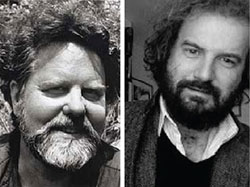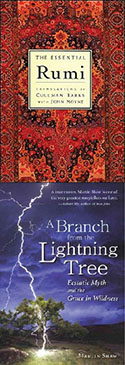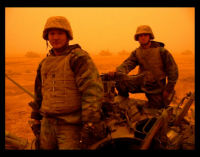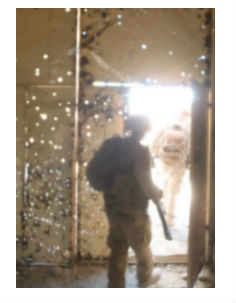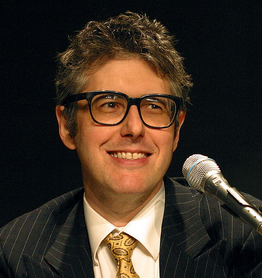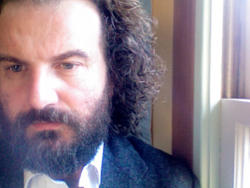
From the SSP blogging staff: In preparation for our event this Friday with Coleman Barks and Martin Shaw, SSP blogger Bonnie Swift held an informal interview with Martin Shaw, asking him about repetition in the oral tradition, in the light of Shaw’s telling of the Handless Maiden myth.
What follows is the full text of Shaw’s response.
The raw ground of many of these stories I tell are to be found in oral culture. A time when human speech was clearly a note in a far wider music – the roots of these tales carrying the croaking-burrs and twigged silver musings of the magpie tucked tight in their thinking. The teller was placed within, rather on top, of the web of sound the living world creates. This base-line consciousness creates a very vivid negotiation with the wider psyche of sea foam and black bear. Everything is intelligent, animate, communicating.
A great thinker on orality, Walter J. Ong, reminds us that the Hebrew term dabar means both ‘word’ and ‘event’. In oral culture, a word is an event. It has both weight and mighty influence. Ong goes on to give us the illustration of a buffalo hunter being able to smell, taste or touch a buffalo, even if it is quite dead, but if he hears a buffalo, then he better get out of the way quick! The sound is direct, active, informing.
When we realise that when these stories first started to appear the sum total of our knowledge is what we could recall – no internet, no shelves of books – then we start to understand why a word would be considered an event. Recall is not endless, so a certain sense of selection would be necessary. To allow a word into the granary of your storied thinking would be something considered, not a scribbled note in a journal to be picked over another day. This association of action with a word helps us relate the relationship between language and spell casting. To assemble words into your memory is to increase verbal breadth into this wider web of sound, it is a form of power. And because it is power, the impulse is to remember things of true significance; the mind becomes a polished arrow rather than fluffy with whatever the chat show or news is telling us.
As a storyteller I have long suspected that the constant motifs we find in tales – three daughters or sons, an animal ally, a wedding – are a remnant of this oral learning, this need for repetitive scenes to lock the story down in the memory. It is a wonderful discipline for an apprentice storyteller to learn stories by ear only, as an activation of this sophisticated application of memory. Repetition also laces a kind of ritual patterning of language through the wider narrative, it gives it a kind of returning point, and if you improvise in the moment as much as I do, then that’s useful. The ‘matter’ of the story is the progression it follows, but the ‘sense’ of it is how I tell it that day and hour, with particular inflections and emphasis. Matter and Sense are old medieval ideas about how to tell stories. Too much ‘matter’ and it lacks imagination, too much ‘sense’ and it becomes weightless, lacking the pathos of its history through many mouths and cultures. So the mythteller is a hinge between tradition and innovation.
This is not to equate imaginative flatness with this form of retention – certain descriptions will go alongside the characters. As Ong describes it, they would prefer brave soldier to soldier, sturdy oak to oak, and so on. Whilst the image is fleshed out in nothing like as much detail as a modern novel, these brief inflections create just enough rooting for the story to reach its tendrils into the oral listener’s imagination. For them to actually invest in the retaining of the story.
The value of repetition within speech is also a throwback to when groups may have struggled acoustically to hear the speaker, or the imperative was to ground the words in the oral memory of the listener. In a culture that is oral, knowledge not repeated soon evaporates, and so this grounding was crucial.
This evaporation is useful for forgetting specific tribal traumas (although they often linger for some generations) as there are no written texts reminding the group of a great abuse or loss, thereby weakening their wider mythos. If the group moves location and the geographic anchor to genealogy and story changes, then before too long the storyteller stops repeating them and it drifts into a great forgetting. Of course, there are variants of this – far distant memories of homelands have been sustained in certain cultures – for example, the Gypsies – for many hundreds of years. But as a loose rule, there has to be collective decision to ‘keep remembering’ for the old patterned genealogies to stay clear in the group mind.
Oral storytellers, although insisting they don’t deviate from the narrative, almost never give a verbatim recital. Being placed into groups frequently – even faced with those you have known all your life – alerts the teller to the collective moods they are confronted with and how they themselves are feeling. Hence, the intonation and emphasis will vary. There is also the thought of how the story itself wishes to be told that night. As an independent agency, both linked to memory retention and supernatural agency, the story has its own peccadillos. It’s a contrary beast.
If, gathered under threadbare canvas or by the hearth fire of a Cumbrian farmhouse, the old stories are told, then there is an undeniable sense of communitas, a reaffirming, a brushing up against mighty images that remind the group of their history, place and values. The characters who elegantly waltz into the room are ancient companions. All laugh at the three gossiping ravens, or hold their breath as the young woman wanders forest paths at midnight, despite knowing the outcome. The characters in these stories have to be remarkable or they simply would not be remembered within an oral climate.
Video of Martin Shaw telling “The Handless Maiden”
with Daniel Deardoff at Kulak’s Woodshed in North Hollywood in 2010
39 minutes
{jcomments on}
